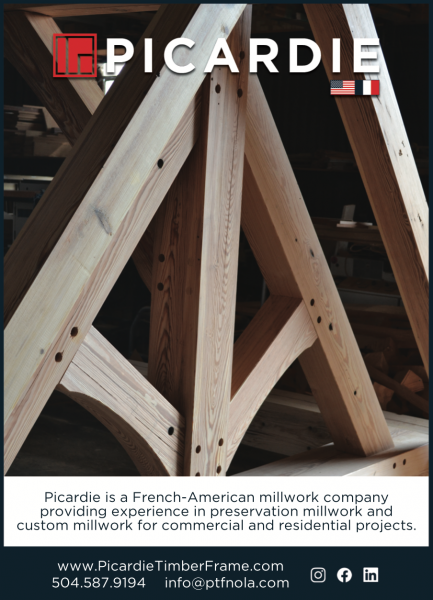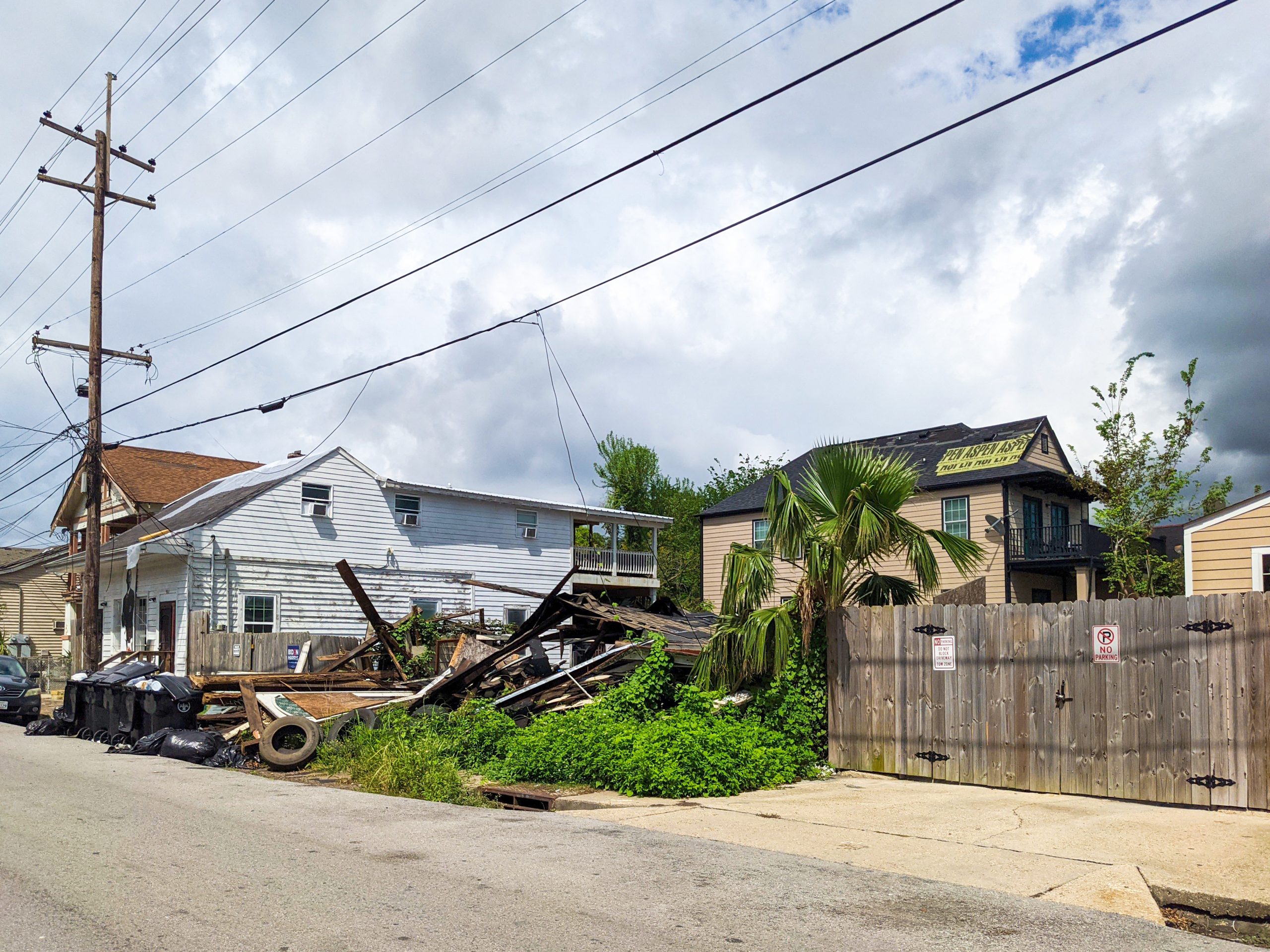This story appeared in the October issue of PRC’s Preservation in Print magazine. Interested in getting more preservation stories like this delivered to your door nine times a year? Become a member of the PRC for a subscription!
After Hurricane Ida slammed New Orleans, Emily Ford scrutinized every tomb in all six city-owned cemeteries to photograph damaged structures. She found 22 hurricane-damaged tombs and sent pictures of the plots to the owners with notes that their relatives’ resting places needed attention.
It could be said that these visits were part of Ford’s job — she is the superintendent of those burial grounds — but for her, it was something more. It was the same reason she attends as many funerals in those cemeteries as possible.
“I’m showing people that I’m interested in being there,” Ford said. “We care, and we are listening.”
It also was part of her continuing effort to impress upon people the importance of tending to their relatives’ graves and to offer suggestions and support for getting such work done. Even though Ford has the power to force clean-ups and even declare tombs abandoned, “it’s practically impossible for us to do anything like this,” she said.
“I am much more of a carrot person than a stick person,” Ford said. “I would rather share expertise and resources than show up and rap somebody on the wrist for not doing things in the exactly perfect way. … I would rather make it easier to … show there’s a point to doing this. If you have questions or need support, call me, and we’ll talk.”
Ford, who has a master’s degree in historic preservation, has held the directorship since December 2019. She and Kewanda Baxter, a cemetery services specialist, are the only two full-time employees in that office.
“Cemeteries need slow and consistent stewardship,” Ford said. “It’s a hard sell. With whatever money I could use for a big, sexy project, I could hire three guys to cut grass. That makes the neighborhood better.”
Advertisement
In addition to surveying the tombs after Hurricane Ida, Ford also found that the storm had knocked down two trees and felled some branches at various locations.
Emphasizing the importance of getting involved in cemeteries is a logical follow-up to Ford’s time with the National Park Service in Mesa Verde and Zion national parks, where, among other things, she learned that she and her colleagues were there to do more than rhapsodize about the view.
“Park rangers don’t do educational talks to entertain people,” she said. “The purpose of interpretation is to connect visitors to the resource because you want the visitors to support the resource in the future. The object is to create a long-term interest in stewardship.”
Which explains Ford’s desire to motivate people to take an interest in their relatives’ graves: “We want to connect the neighbors and the families to the resource because we need the families to maintain those cemeteries long after I’m gone.”
Not everyone needs much encouragement. For instance, Lafayette Cemetery No. 1, in the heart of the Garden District, has an organization of about 70 tomb owners. Even though that graveyard is closed to the public, Ford said relatives of people buried there can arrange a visit by contacting her office.
Also high in visitor interest, she said, is Holt Cemetery, a seven-acre graveyard abutting Delgado Community College’s City Park campus.
“Holt is the most-visited cemetery in the city by families,” Ford said. “I have never been alone in Holt. There is always a family there to care for a grave. Holt is special because of the living people who have family members buried there.”

Photos by Charles E. Leche
Holt Cemetery is named for Dr. Joseph Holt, an official with the city Board of Health, who established the graveyard in 1879 as a site for burying poor people. It replaced the overcrowded Locust Grove cemeteries Uptown.
Among the people entombed there are the jazz pioneer Charles “Buddy” Bolden, who lies in an unmarked grave; Jessie Hill, the blues singer and songwriter best known for “Ooh Poo Pah Doo”; and four victims of the Upstairs Lounge fire in 1973.
Even though Holt hasn’t officially been a cemetery for poor people since 1967, the stigma of its early years remains, along with residual racism because Holt became a cemetery whose population was overwhelmingly poor and African American, Ford told The American Scholar magazine.
“When the cemetery became a de facto segregated space, city services completely abandoned it,” she said in that interview. “The disastrous conditions at Holt starting in that period were absolutely a product of racism.”
Unlike most other New Orleans cemeteries, all the burials at Holt are underground. While some graves are unmarked, others feature handmade, hand-lettered markers. Some sites need repair.
Advertisement
Writing for The New York Times in 1998, Rick Bragg said, “If richer, older cemeteries are a record of New Orleans society, Holt Cemetery is a symbol of its potholed streets, its peeling shotgun houses, its un-air-conditioned churches, bingo halls, blue-collar social clubs and beer joints.”
It is crowded. Closing Holt has been discussed, but Ford said that cannot happen until a replacement is found. Until that happens, she said, “closing is not the right thing to do to close the door on affordable burials in the City of New Orleans.”
The city launched a $450,000 restoration project in 2013. More recently, her office entered into a project with the University of New Orleans’ Midlo Center for New Orleans Studies and the Neighborhood Story Project to do oral-history interviews with the gravediggers and the people whose relatives are buried in Holt.
Besides collecting stories, Ford said this initiative was designed to strengthen community bonds with a burial ground that has long been overlooked by the public at large.
“Holt is a nationally significant historically African-American cemetery,” she said, “It is monumentally important, and monumentally marginalized, I think we’re finally getting to the point where its significance is finally being acknowledged, and we’re at a position with Holt where we can do a lot of reconciliation of the city’s neglect.”
Keep reading:
Historic Metairie Cemetery is the final resting place for some of Louisiana’s most noteworthy and notorious residents
New Orleans Catholic Cemeteries create digital maps of its oldest burial grounds
Advertisements










